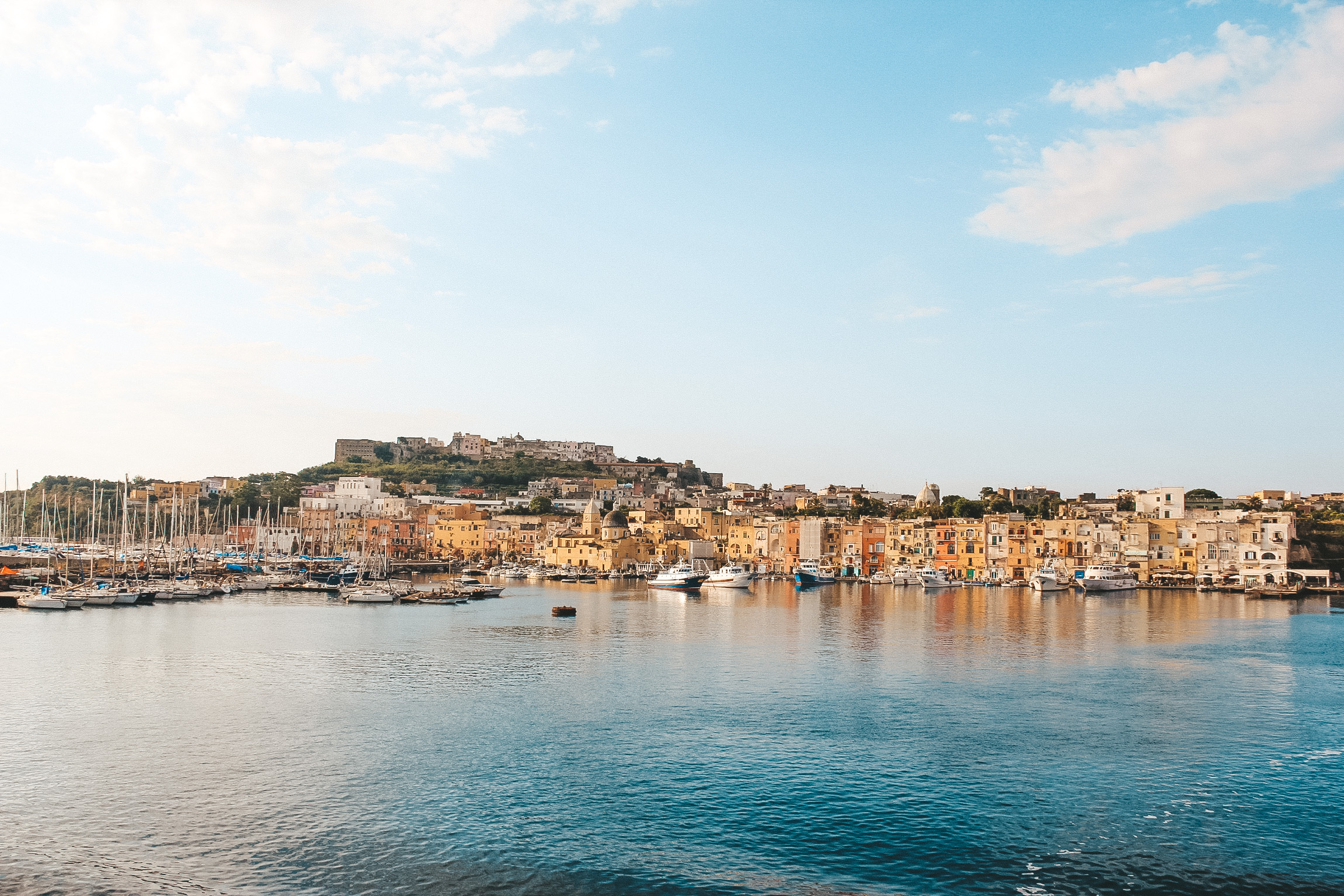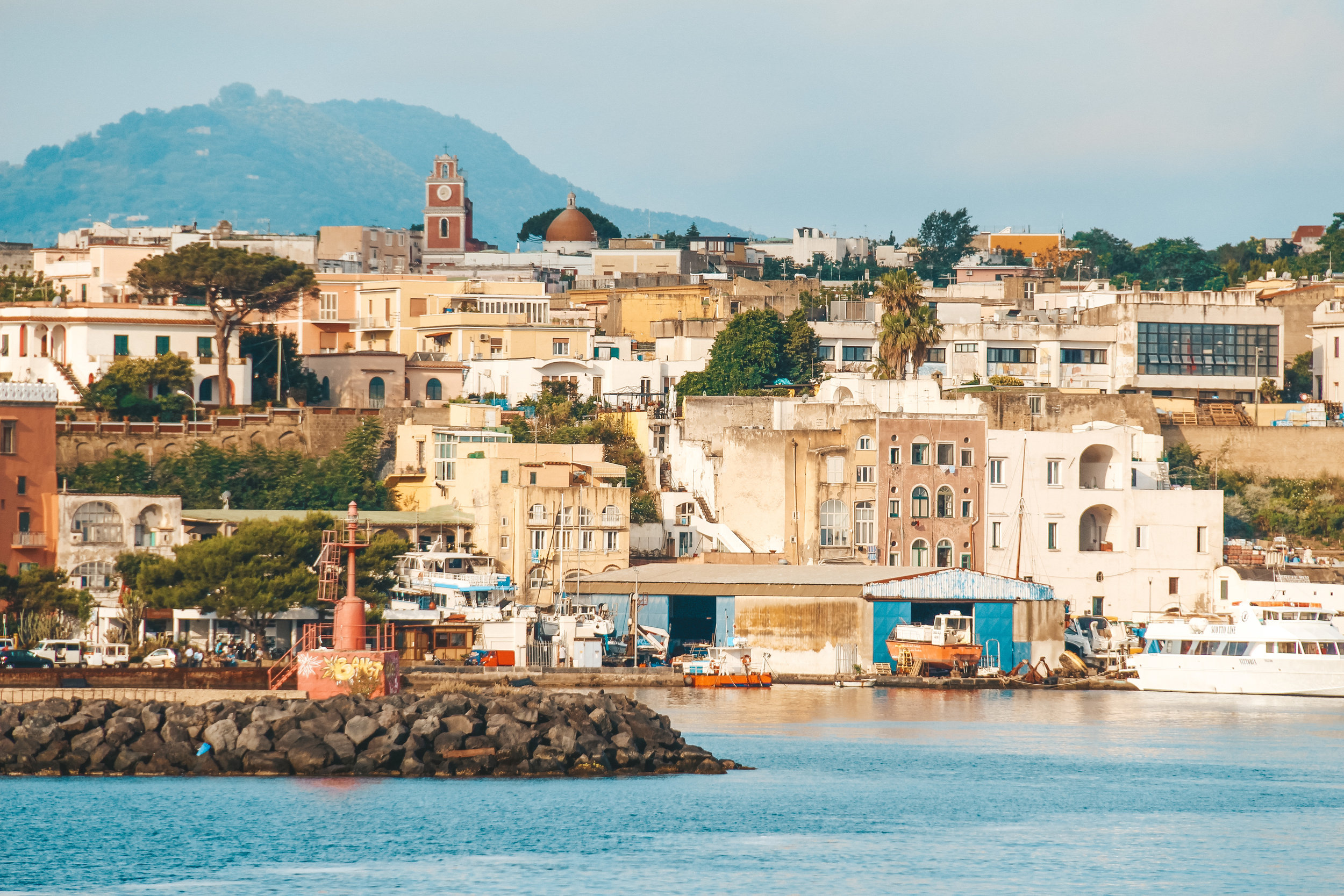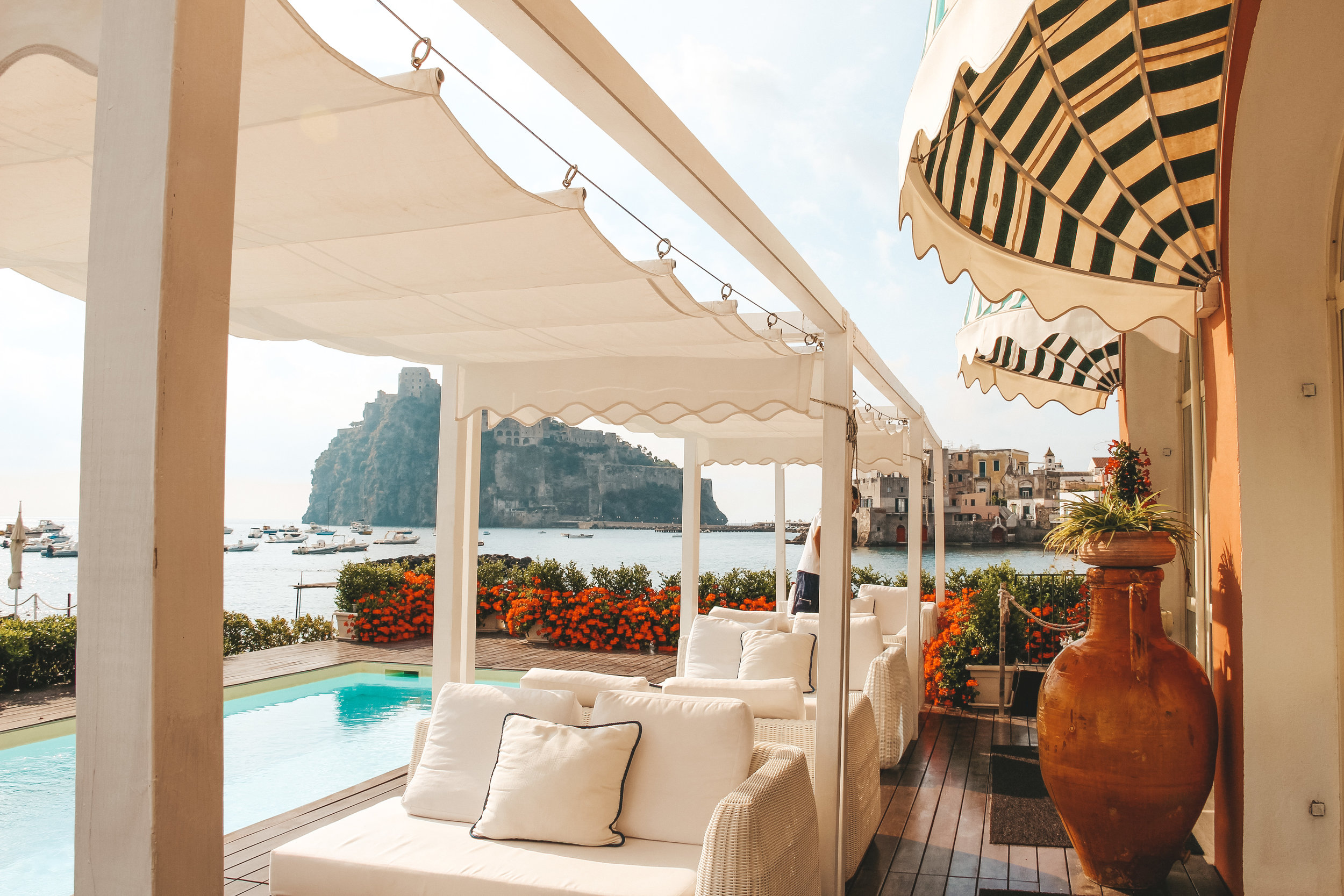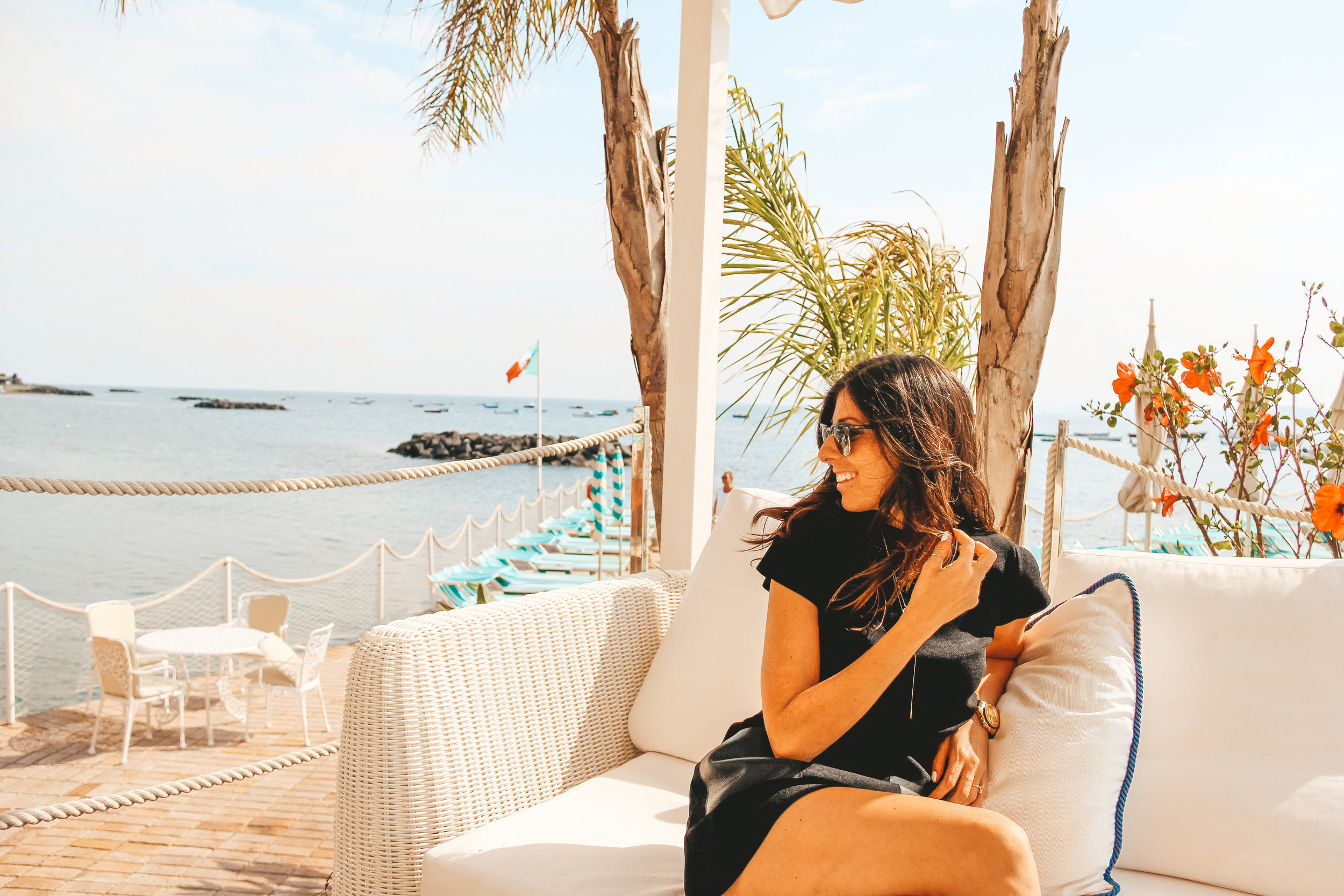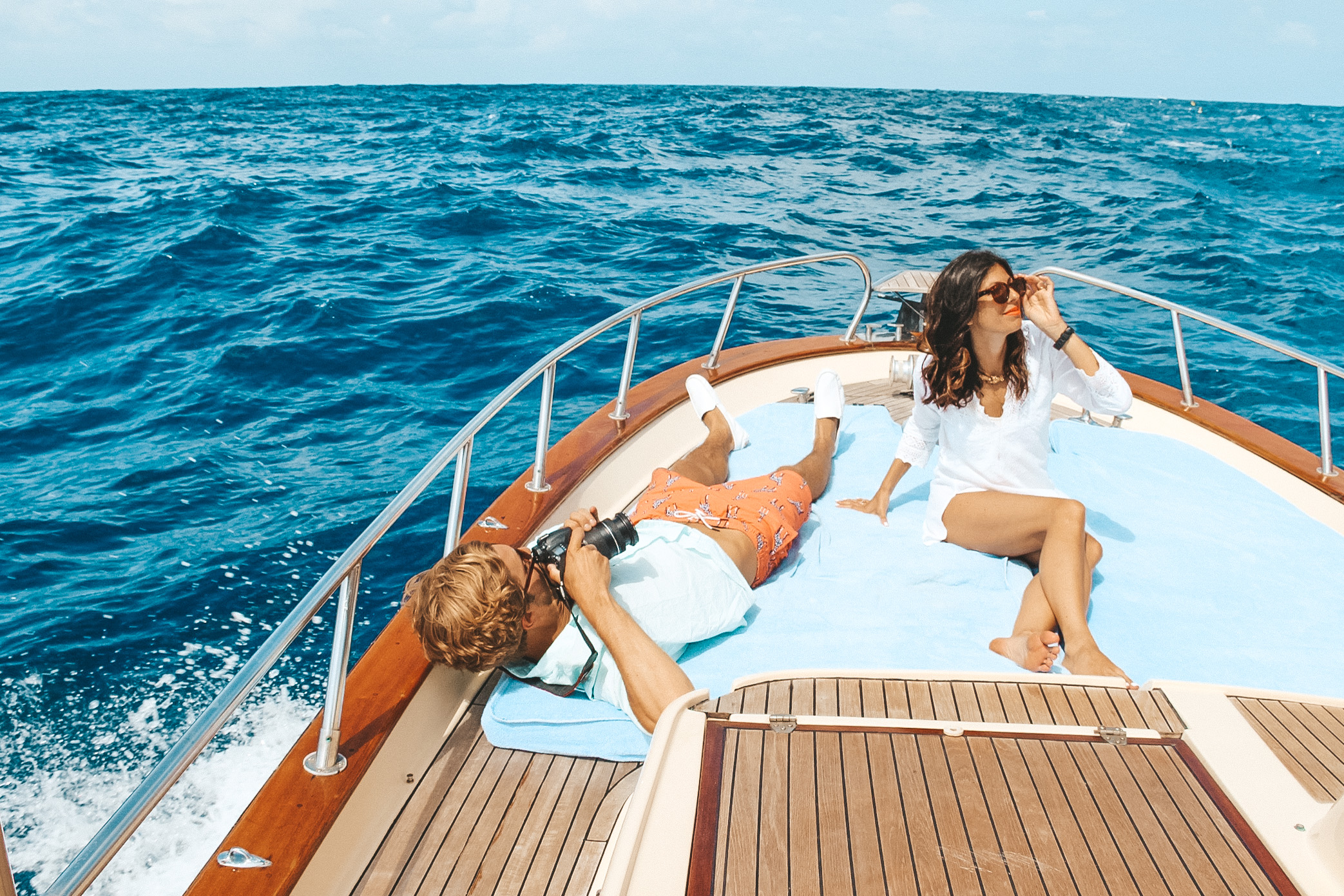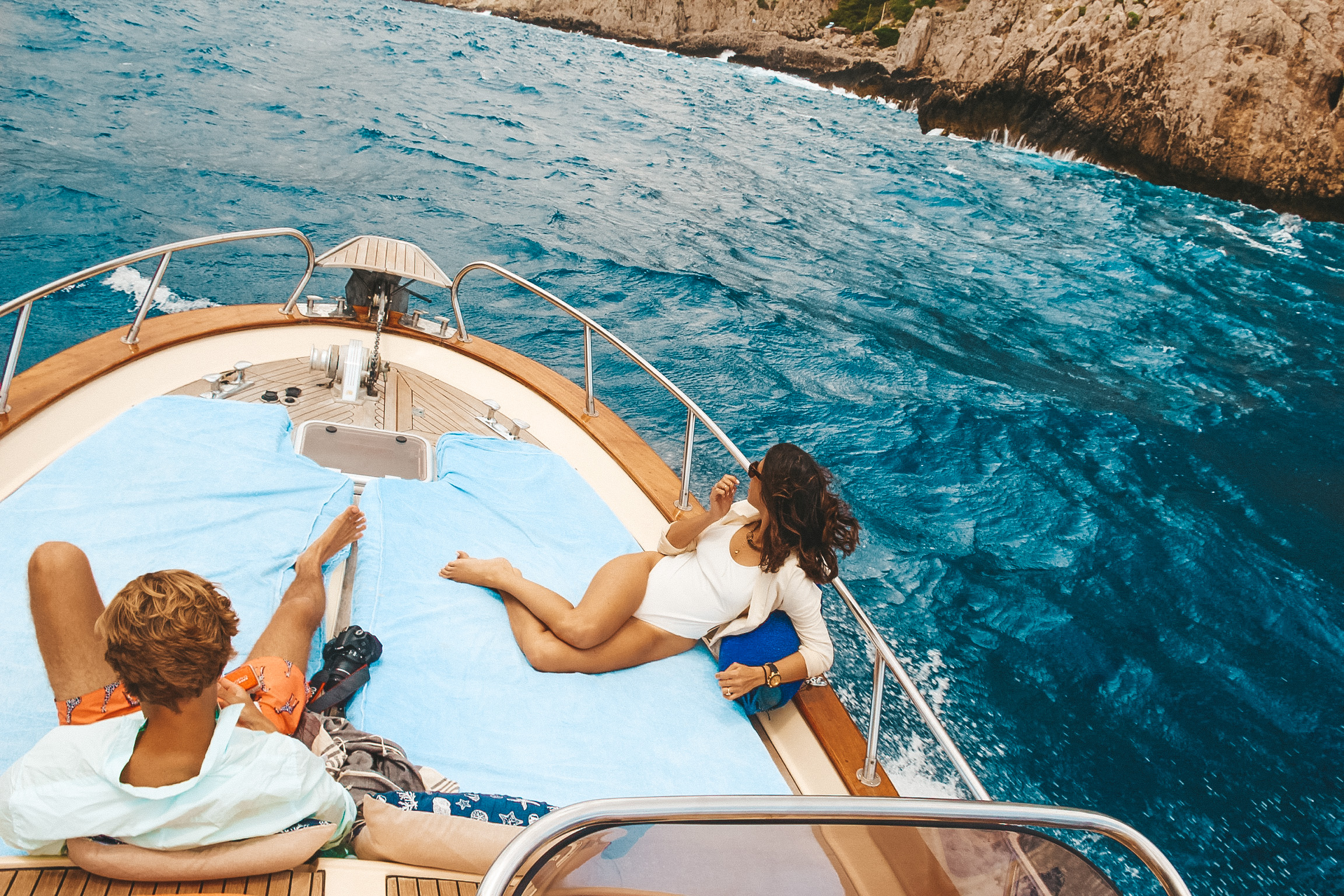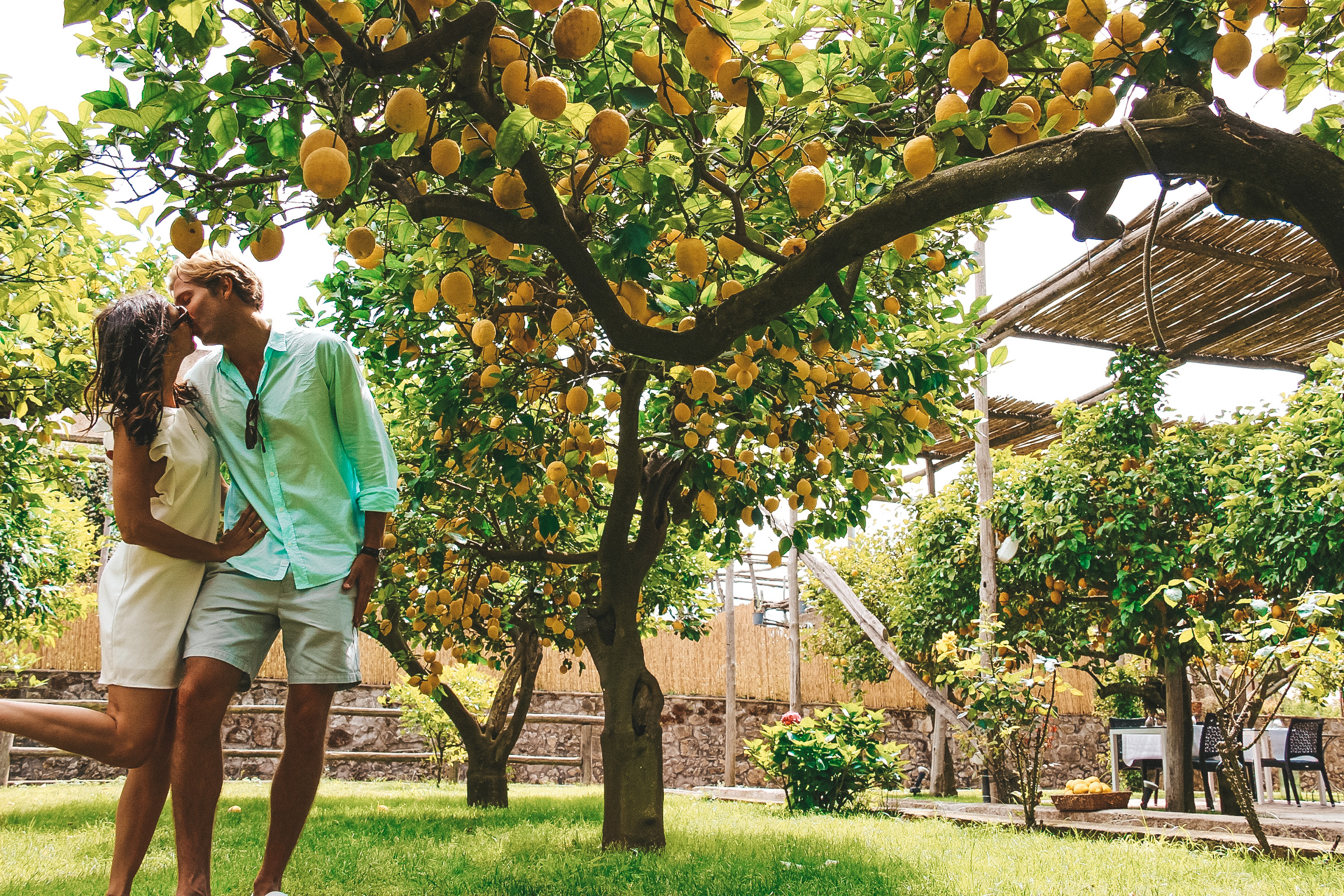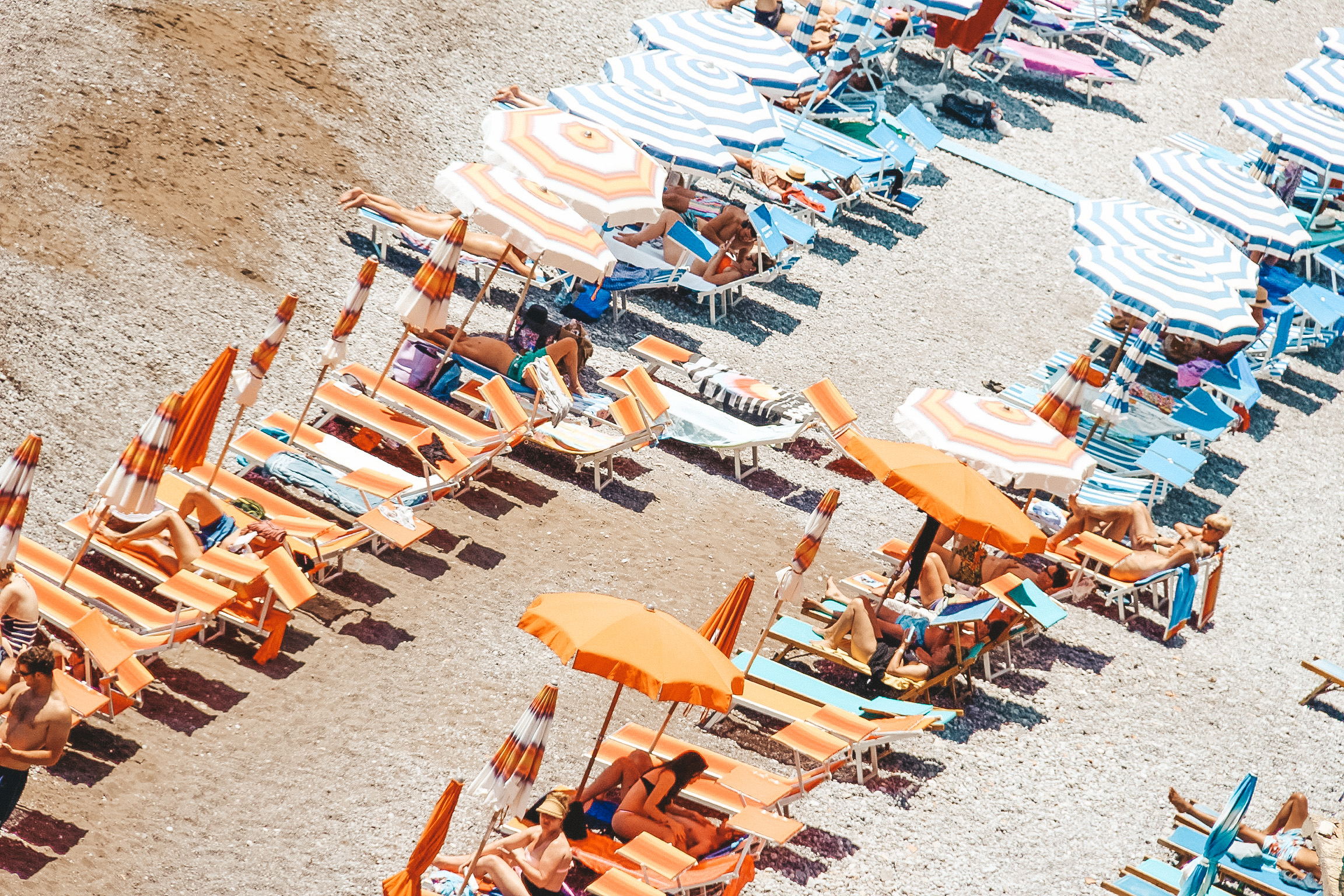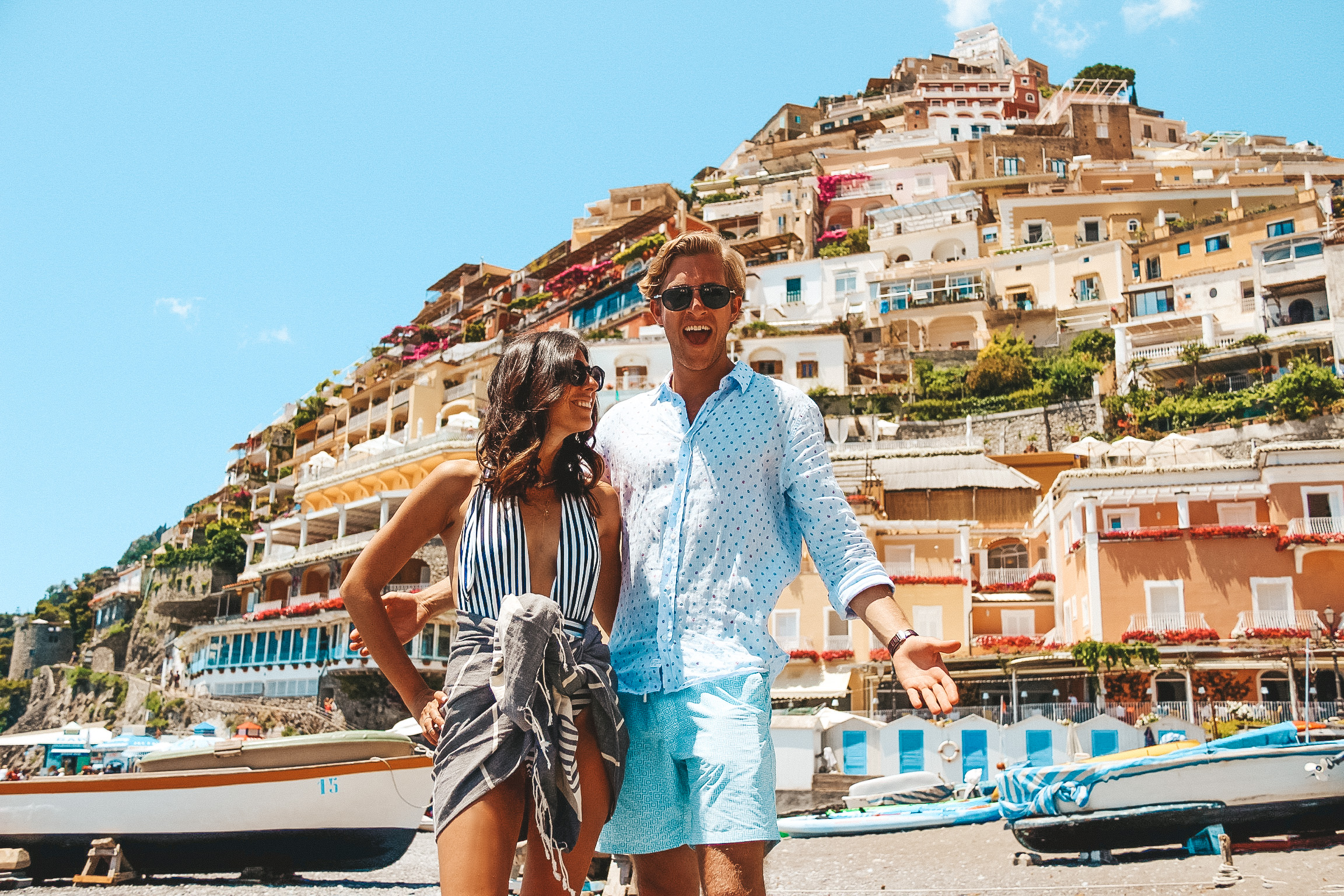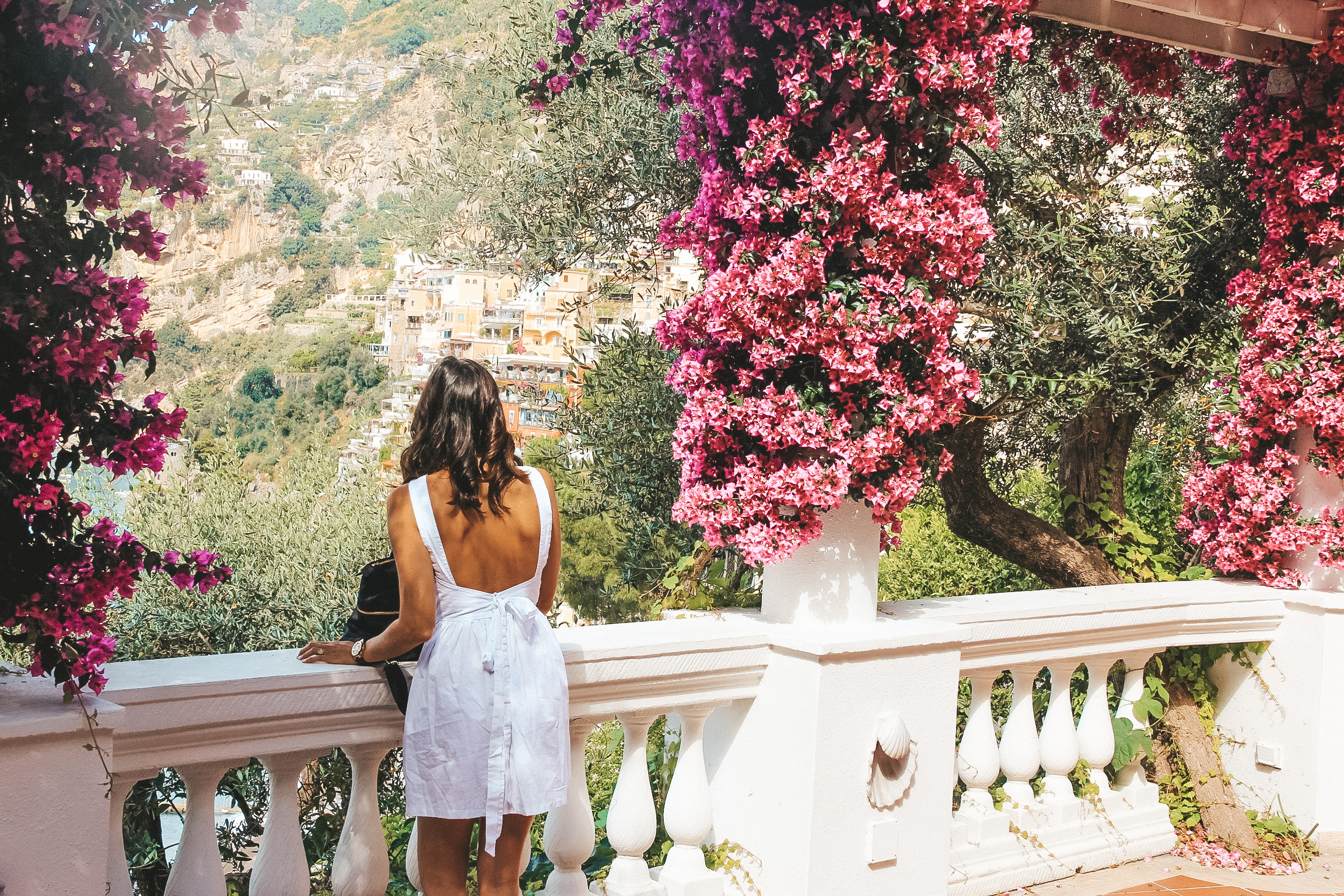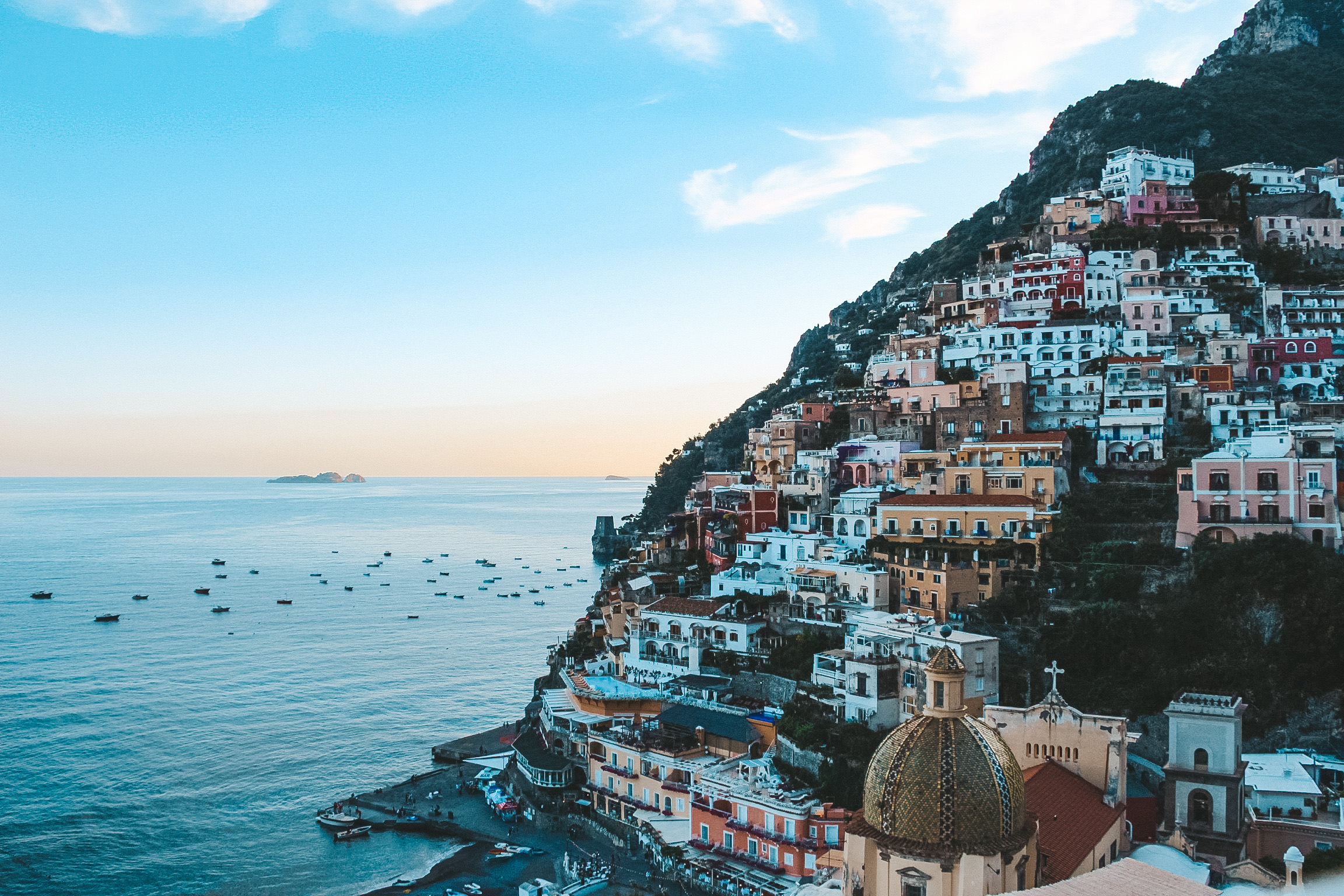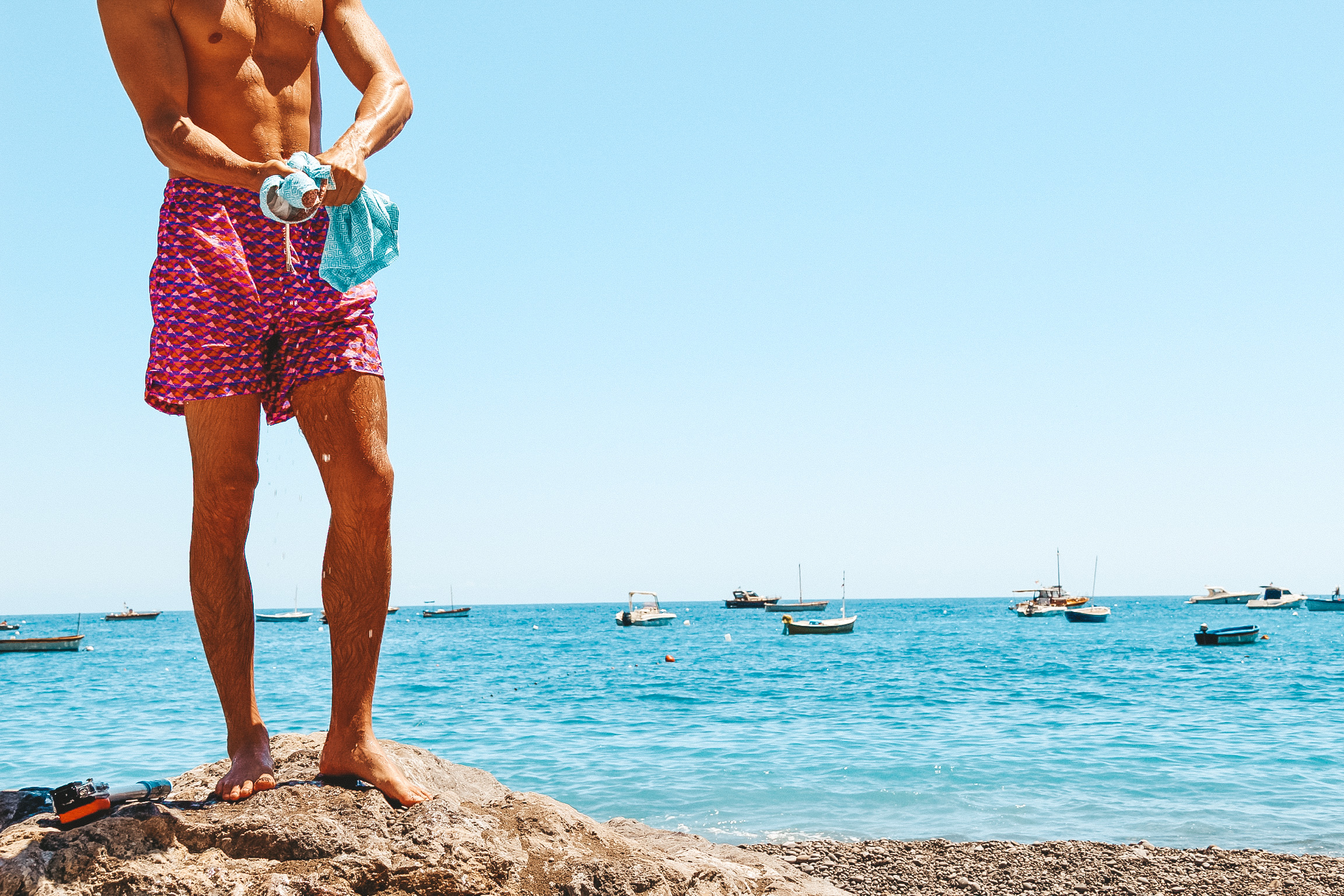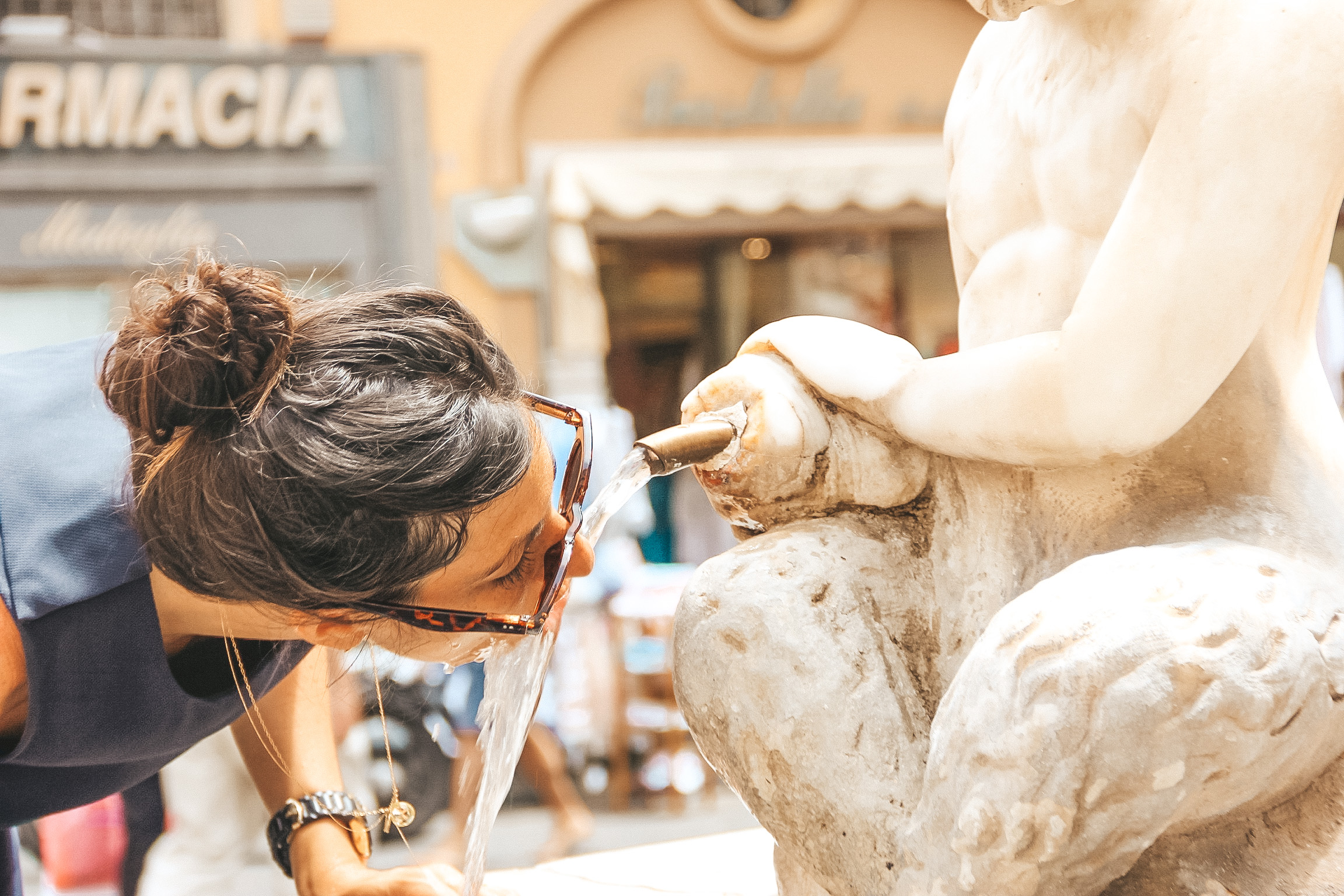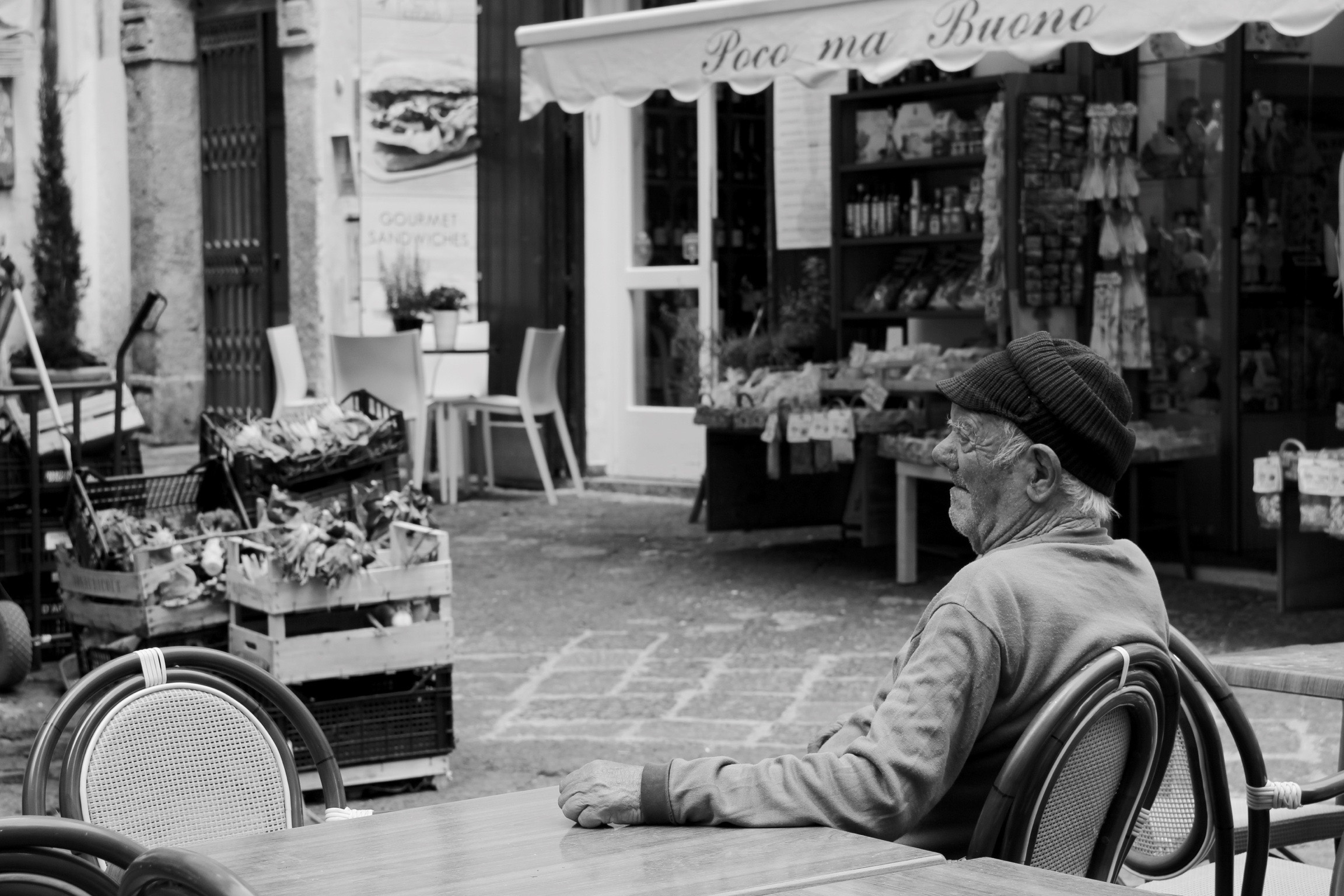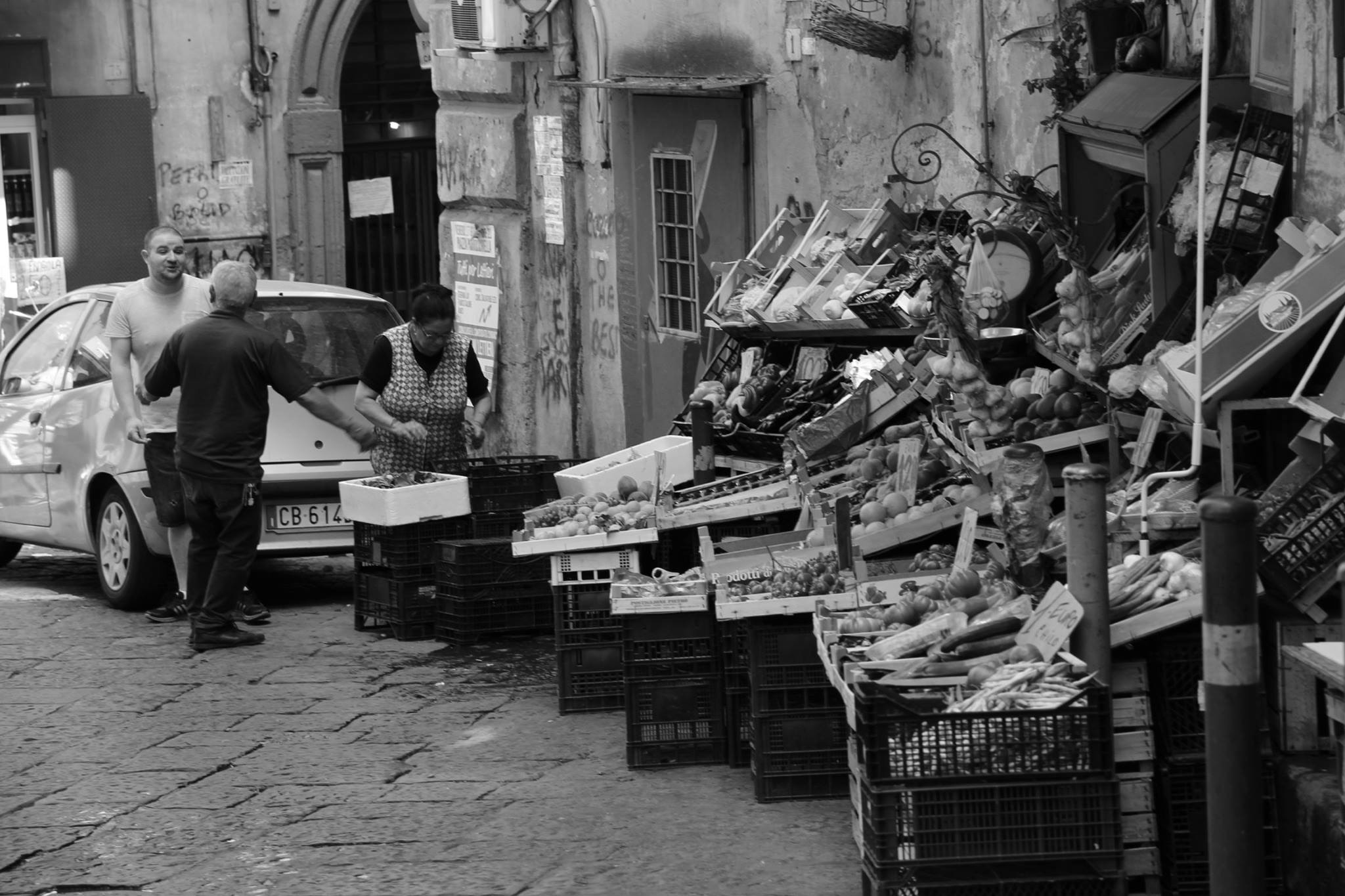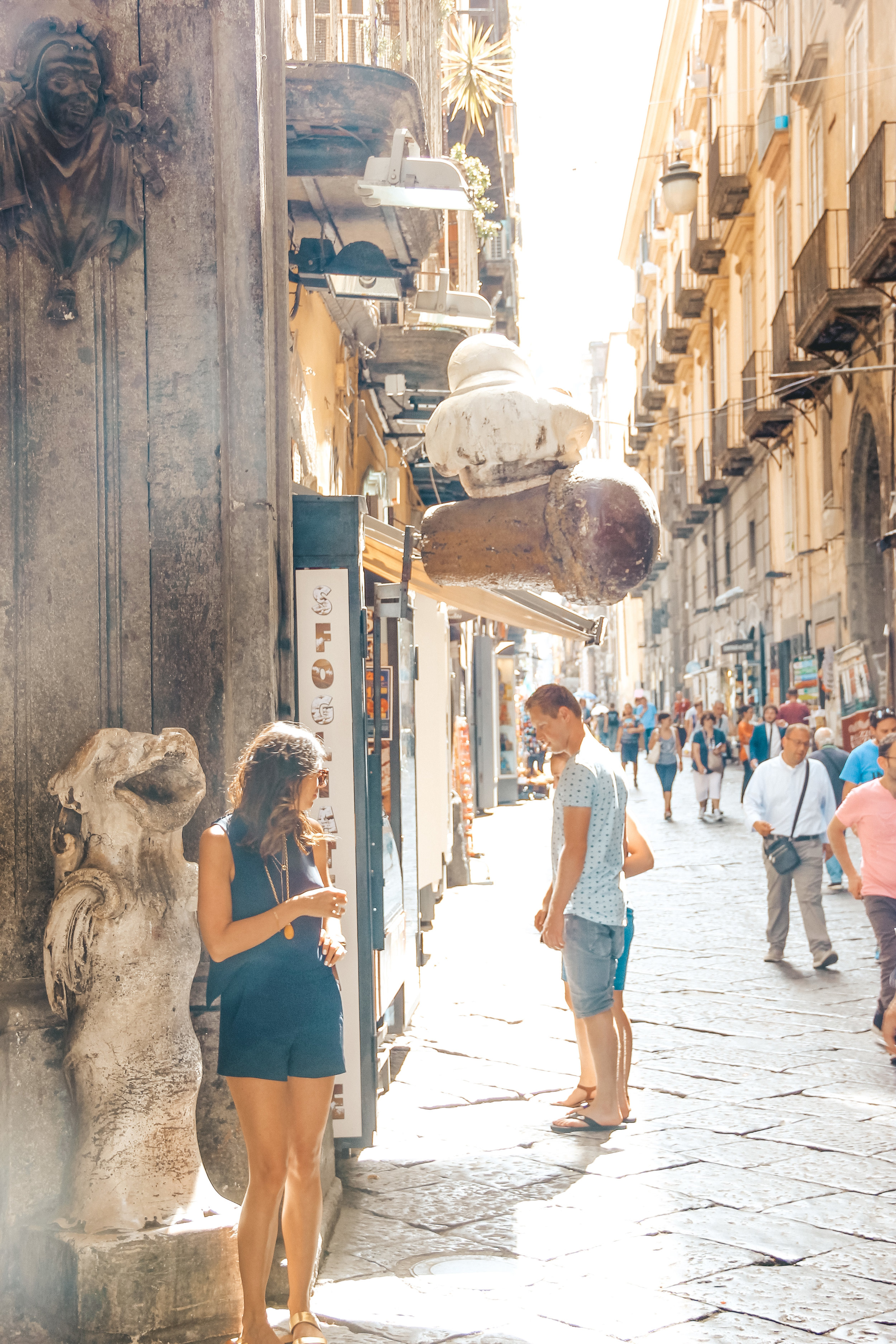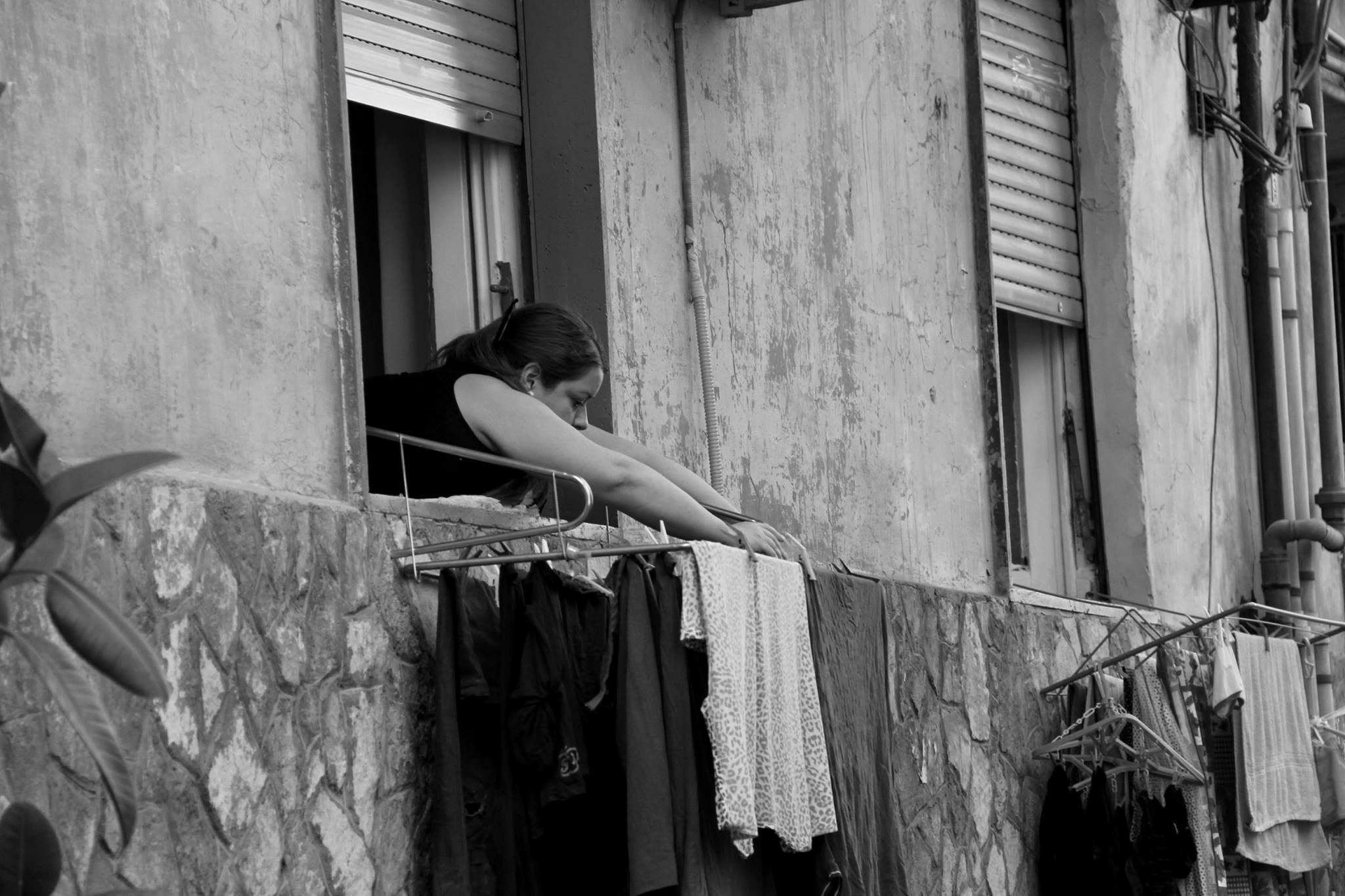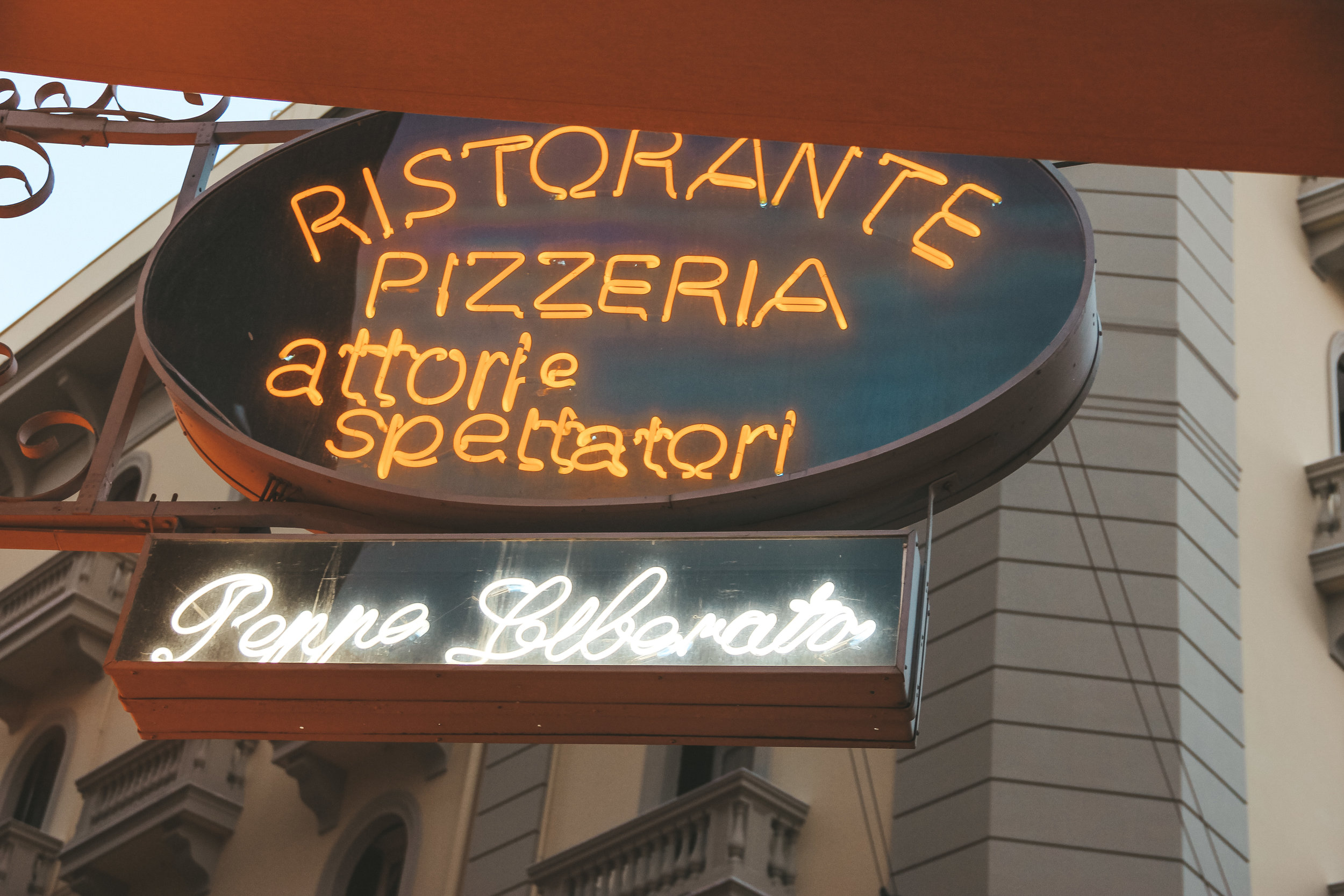AMALFI COAST IN 1 WEEK

The Amalfi Coast is a must visit destination! In summer months, it can become a little crowded, but some destinations are crowded because they're unmissable, right? The Amalfi Coast is on this list! Read on for some of the highlights, favorite things to do, and lesser known destinations to avoid the crowds.
Know Before You Go
Plan to visit Procida & Ischia (2 nights); Capri (2 nights); Positano (2 nights); Amalfi (1-2 hours); Ravello (1 night); and Naples & Pompeii (1 night before/after flight).
Logistics
1. Fly into Naples, and grab a taxi to the seaport where you'll connect to a ferry. Board a ferry to Ischia, which first makes a stop at Procida. Either disembark for a few hours and explore Procida, or continue on to Ischia and arrange for a boat to take you back to Procida the next day.
2. The best way to travel between the islands (Procida, Ischia and Capri) is on the high speed ferries. You can buy ferry tickets just before departure, but in high season book and check the schedules in advance, as Ischia only runs 1-2 daily ferries to Capri. We learned this the hard way! From Capri, take a ferry to Positano.
3. Once in Positano, take a Sita bus to Amalfi and continue onto Ravello. If you have luggage, you can go to the bus station in the center of Amalfi and store your luggage for a few hours in lockers for a few euros. That way, you can spend 1-2 hours exploring Amalfi without baggage - or at least luggage :)
4. Book a car from Ravello back to Naples, which can stop in Pompeii and wait while you visit the ruins (and hold your luggage).
Quick Tips
1. The Amalfi Coast (collectively referring to all of the towns) is different than the single town of Amalfi!
2. Visit in the months of April - June, when it's warm and the flowers are most beautiful, or September - October. Otherwise, expect crowds.
3. Cobblestones, rocky beaches, stairs and lots of ferries require practical shoes, and at best, wedges. Heels won't work, unless you're a true pro, and the islands are casual, so there's no shame in leaving your heels at home. The Amalfi Coast is a combo of beach and island life with a relaxed, summertime vibe. New Yorkers, leave your all-black outfits at home (lesson learned) and opt for linens, flowing dresses and a light, colorful vacay wardrobe.
Procida & Ischia
Procida
Plan a stopover in Procida. Either take the ferry from Naples to Procida and spend a few hours strolling around before continuing to Ischia, or rent a private boat from Ischia. Procida is the smallest of the islands in the Tyrrhenian Sea and is simply gorgeous, low-key, and relatively undiscovered. It's served as a film set for more than 30 movies, perhaps the best known being The Talented Mr. Ripley.
Ischia
Ischia is Procida's neighboring volcanic island in the Tyrrhenian Sea. Replete with hills and mountains, Ischia provides for landscapes (and photo ops) that rival the famed cliffs of Positano. Ischia is well known for its thermal spas where you can seriously relax and enjoy the island's natural volcanic activity, hot springs, and volcanic mud. And, for the literature obsessed like me, Elena Ferrante's series of Neapolitan Novels take place on Ischia as the setting of the main characters' summer vacays.
Stay
Miramare e Castello Hotel. This gorgeous luxe hotel, replete with classic Italian island charm, was a highlight of our trip and where we spent as much time as conscionable. Located on the sea with a private beach, it has a gorgeous pool and Ibiza-vibes lounge area overlooking the water and historic castle. Breakfast in the gorgeous tiled, sunlit room overlooking the water defines #breakfastgoals. Also, we came back to the hotel one night to find a lively, upscale bar scene and a pianist and singer bringing the space to life with his set and - which got me up and dancing - songs on request! We drank negronis until the early hours of the morning and shut the place down. So, we've also concluded that this hotel defines adult #partygoals.
Do
1. Visit the Aragonese Castle. For the history obsessed, the Aragonese Castle is a must! For all others, its worth it just to see the fairytale-like castle and views of Ischia from the top. The Castle was built on a rock near the island in 474 BC, and later, in 1441 was connected to Ischia with a stone bridge. At that time the walls of the Castle were fortified in order to defend the inhabitants against the raids of pirates (PIRATES! This is real life, guys!). By 1700, there were about 2000 inhabitants of the land, including a convent, an abbey of Basilian monks, a bishop, prince and military, in addition to several churches. TIP: consider hiring a private boat to take you around the Castle for great views.
2. Ischia Ponte. Stroll this lively world-class port town with quaint storefronts and great local shopping.
3. Spiaggia dei Pescatori. Experience the iconic fishermen's village by spending time strolling around this iconic mooring spot and its beaches. Bring your camera! This area is picturesque and relatively unblemished by tourists.
4. Giardino Eden. Ischia is famous for its geothermal beaches and baths, and Giardino Eden is the place to experience the best of it! The four pools, hydromassages, and heliotherapy treatments are heaven, and this "eden" is filled with lush, tropical gardens. Say no more!
Eat
1. La Lampara at Miramare e Castello Hotel. This relatively higher-end restaurant serves excellent food, and offers unrivaled views of the Castle aglow at night. Opt for a seafood dish, since the restaurant serves fresh seafood caught that day!
2. Ristorante Pizzeria Pirozzi. Quaint tables pepper the cobblestone street where excellent local Italian dishes are as delicious as they are picturesque. As with the Miramare, the seafood will have been culled from the Mediterranean earlier that day.
3. Juice at a local citrus stand. A local specialty, prepare to have the most delicious orange juice of your life! Served with ice, the oranges are juiced along with lemons the size of grapefruits to make the most refreshing, delicious and healthiest citrus drink on earth. For the more daring, opt for just the lemon juice! It's really, really tart. Pucker up!
capri
Perhaps the best known of the islands, Capri is famed for its rugged landscape, upscale hotels, shopping that includes world class designers and local artisans seriously good at their crafts, including handmade Italian shoes (move over, Gucci) and limonello, and yachting along the dramatic, cove-studded coastline. Capri is also a major tourist destination, so take our advice in order to avoid the huge crowds!
STAY
Hotel Capri. Centrally located in Capri Town (warning that this is the most touristy part of Capri, but also centrally located, so a convenient place to stay), the elegant Hotel Capri is a historic pink palace with Gothic arched windows and beautiful views of the island and sea below. It's location provides a super convenient base for shopping and exploring the island, and it's right across the street from the bus station and taxi stand if you want to go to Marina Piccola or Anacapri (trust us, you do).
DO
1. Anacapri. A part of the island away from the beaten path of Capri Town is Anacapri - with some of the best restaurants, little shops (if they're open!), quaint streets and most lively nightlife. The gelato was some of the best we had. The most picturesque flower shop is Oltre il Giardino, along a street with many other stylish boutiques. Definitely stop in and treat yourself to a worthwhile "souvenir" at the world class boutiques selling linen clothing and accessories.
2. Capri Town Shopping and Piazzetta. In the heart of Capri Town there is upscale shopping and fun local shops that are not to be missed! Julian got 3 (THREE!!) pairs of handmade Italian loafers at Schettino Lidia. It’s worth spending a few hours in this area, and note that almost all roads lead to the famous Piazzetta. Although it gets crowded with day-trippers, we still loved the cafes in the center square and had delicious coffees and apps. The best views are seen from the Belvedere Tragara outside the Punta Tragara Hotel, the walk to which is Capri's most classic passeggiata.
3. Boat around Capri. Don't skip this! Boating provides a unique perspective of the Island and its coves from the water, and is a very special and private way to spend a morning or afternoon. You'll also cruise by the blue grotto, and avoid the masses waiting in line to see it. We had the best experience on Raffaele's Fratelli Aprea of Capri Blue Boat Tours located in the lesser-known Marina Piccola - a place worth visiting in itself - we highly recommend!
4. Visit any or all of the historic sites Villa San Michele, Certosa di San Giacomo & Villa Jovis. San Michele is a museum and former home of Swedish author and physician Axel Munthe, but most notable for the structure itself and its breathtaking views. San Giacomo is a semi-abandoned medieval monastery turned museum set behind a lemon grove, Marina Piccola, Villa Jovis and the Gardens of Augustus. Villa Jovis is a 2000-year-old villa built by emperor Tiberius and completed in AD 27, where he ruled until his death in AD 37- insane! - that was rediscovered in the 18th century. It's expansive and houses many Roman baths, and provides a killer view over the Bay of Naples.
EAT
La Zagara, Anacapri. This restaurant is better thought of as a secret garden. Do yourself a favor and have dinner amongst a beautiful expanse of lemon trees in the middle of this impossibly romantic lemon grove. At dinner time, the lemon trees are alit with beautiful twinkling lights. The food is good, but the scenery is epic.
Da Gemma. Nestled under the arches of a tiny lane, this classic restaurant has been around since 1872 and serves great staples, including pizza and seafood pasta.
Positano
Positano is the gem of the Amalfi Coast in so many ways, one being its photogenic cliffside village offering quintessential panoramic views of sun-bleached peach, pink and terracotta structures built into mirroring cliffs that converge onto the famed brightly colored umbrella-saturated beach. Positano is replete with narrow streets lined with boutiques and cafes, crystal coves, stellar food, narrow, twisting alleys and little stairs decorated with plush blooms and wisteria-draped bypasses that wind up and around this magical vertical village .
stay
Le Sirenuse. Positano is Le Sirenuse. This is one of the leading hotels of the world and contributes so much to the town. The palazzo property was formerly the seaside retreat of Franco Sersale, one of the hotel's founding members. The decor, service and taste of this hotel are nearly unmatched, and the majolica tiled rooms are filled with museum-worthy antiques. Franco's namesake is given to the awesome lounge connected to the hotel (more below). Also, don't miss Le Sirenuse's gift shop. With a home goods store, and boutiques for men and women, it's some of the best and unique shopping on the island. Gents, do yourself a favor and get a bathing suit from this awesome place.
Villa Rosa. Situated right behind and slightly above Le Sirenuse, the location is ideal for exploring the town on foot. Gorgeous Mediterranean white-washed architecture with pretty domed ceilings and arches define Villa Rosa. Breakfast is served en suite, on the gorgeous and enormous terraces overlooking the city and sea which rival any view in Positano. Roses and other flowers are everywhere at this adorable hotel, and the balconies have beautiful red roses growing on them.
do
1. Beaches. Everyone who has Instagram knows the Spiaggia Grande, famous for its colorful rows of umbrellas. This beach is beautiful, but if you want a great photo, get there at sunrise as this beach is the most crowded. For a more relaxing experience, try Fornillo, a short but worthwhile walk along the coast from Spiaggia Grande. Although we only went to a Fornillo restaurant for a drink, we were coveting the delish looking dishes served to our neighbors.
2. Chiesa di Santa Maria Assunta. This beautiful church has a typical majolica-tiled dome and a 13th-century Byzantine icon of the Virgin Mary.
3. Sentiero degli Dei hiking trail. This is a commitment, but the trail links Positano to other coastal towns and provides spectacular views of the coast.
4. Get lost. Spend time following narrow walkways, climbing the stairs, darting down little alleyways, and venturing north in this vertical, quaint town. Unlike our suggestion, you won't actually get lost, but you will discover amazing shops, bakeries, vendors, al fresco boutiques, flowers, and revel in some seriously picturesque vistas.
eat
Da Bruno. The set-up of this restaurant is so typically Italian, where waiters have to dash across the street, in front of and around cars, with dishes of food. This charming yet slightly terrifying scene only adds to the quintessential charm of this place. Tables are sandwiched in a row along a sidewalk between the street and cliff, overlooking the town and beach, so you feel all the ambiance of a bustling restaurant and none of the negatives, including that panic when you think you're going to get a bad table. This place is elevated still by its casual demeanor and beautiful, southern Italian flare. The food is out of this world, and every dish that I saw leave the kitchen made me want to change our order. I had the most amazing puttanesca pasta dish that I wanted to eat for the rest of my life, and the polpo alla Luciana octopus with cherry tomatoes, olives and capers was amaze.
Franco's. This epic, Ibiza-vibes al fresco lounge suspended above the town and sea has an unmistakably chic vibe and is the best place for, as they say best, "amore, for friends, for a post-swim aperitif, for quiet contemplation of all that beauty." Not exactly quiet, this place is more like a millennial haven sounding chill electronic beats for the good-looking, well-dressed crowd but which only adds to the unbeatable ambiance. Cocktails and snacks are served in unique artisan earthenware (that I unsuccessfully tried to buy). This place is a must.
La Sponda. The restaurant in Le Sirenuse speaks for itself. The food is gourmet and outstanding, topped only by the most gorgeous al fresco setting in perhaps the world. If you can get a res, go.
Amalfi
Although the cute, quaint Amalfi, with its babbling fountains, sun-drenched piazzas and a little beach was once a maritime superpower with a population of more than 70,000, it is now best worth your while to stroll around for 1-2 hours en route to Ravello, as nearly the entirety of the old city was lost during an earthquake in 1343.
DO
1. Explore on Foot. Spend an hour or two walking around, exploring the little piazzas and their shops that sell local produce. The fountains are all working, so stop and take a sip of the water or fill your water bottle like the locals do.
2. Amalfi Cathedral. This is worth a visit, and if you're lucky, maybe you'll see a wedding here (we did!). The Cathedral is a 9th-century Roman Catholic cathedral in the Piazza del Duomo, and dedicated to the Apostle Saint Andrew whose relics are kept here. The structure is gorgeous and the Cloister of Paradise is glorious.
Ravello
Ravello is a medieval village perched high on a hilltop overlooking the Amalfi Coast, replete with winding cobblestone streets, fragrant gardens, breathtaking views of the Mediterranean and is reminiscent of a bygone era.
STAY
Villa Fraulo. Once the residence of the noble family Cortese, this hotel oozes an aristocratic vibe of Italian nobility, is located within walking distance to everything, and has only 26 rooms that all overlook the sea. However, its best features by far are the stunning terrace with expansive views of the stunning coastline, adorned with an extravagant fountain, and its breathtaking infinity pool that continues from the serene, Roman bath-like spa indoors to the terrace outdoors overlooking a sheer drop of what feels like a thousand miles to the shore below.
DO
1. Villa Cimbrone. In 1976, Gore Vidal wrote of Villa Cimbrone: "Twenty five years ago I was asked by an American magazine what was the most beautiful place that I had ever seen in all my travels and I said the view from the belvedere of the Villa Cimbrone on a bright winter's day when the sky and the sea were each so vividly blue that it was not possible to tell one from the other." Who could disagree? Villa Cimbrone has spectacular views of the coast below, and is adorned with medieval statues and a terrazzo so impressive we spent over an hour just there. The Villa has beautiful gardens, fountains and temples.
2. Town Center. Stroll the medieval cobblestone streets of town, follow ancient alleyways and explore the center of Ravello for all its historic charm. Make sure you see the Ravello Cathedral, built in 1087, which is noted for its bronze doors and 14th-century sarcophagus.
3. Pool Day. Stay in a hotel with a pool and spa. Spend an afternoon reveling in the Italian sun, venerating the gorgeous views and enjoying the last days of your trip to the Amalfi Coast.
EAT
Villa Maria. While we can't personally recommend the food, the hotel is spectacular. We opted for the renowned Il flauto di pan at Villa Cimbrone, touted for its culinary excellence, and were seriously underwhelmed. It was like high end gastronomy gone wrong. Unless you can snag a table with amazing views on the terrace, you'll also do better elsewhere in terms of view. Next time, we'll opt for the restaurant at Villa Maria. If you go, let us know how it is!
Naples & Pompeii
Naples is perhaps the most disliked destination by many tourists. While we get why, we still think Naples is an awesome place to visit and spend a half-day for a few reasons. Spend the other half of your day in Pompeii.
reasons to visit
1. It's one of the most local places you'll visit on a trip to the Amalfi coast. On our walk around the City, we were able to catch a rare glimpse into the Italian city life, away from the glittering waters and polished storefronts on the Coast, into a world where women hang out of windows to fasten wet laundry onto clothes lines, locals crane their necks out of windows to smoke cigarettes, families sit around folding tables covered in plastic table cloths in front of open doorways to enjoy a steaming hot soup or pasta for lunch on a one hundred degree day, and tiny little televisions blast soap operas.
2. Elena Ferrante's Neapolitan Novels take place partly in Naples, and giving life to this formerly imaginary place was special. Life in this seaport city evokes a rundown charm that is typically southern Italian.
3. It's the birthplace of Neapolitan pizza. Need we say more? Antica Pizzeria Port'Alba is the oldest pizzeria, but you can go anywhere serving pizza vera napoletana with high expectations.
4. There are some awesome things to see and do in Naples! Namely, the historic center, and the seaside Castel dell'Ovo, where well-dressed patrons were arriving at dust for a jazz concert in the courtyard. The National Archaeological Museum houses many of the artifacts that were discovered at Pompeii.
5. Pompeii. The famed archaeological site outside of Naples, this and/or Herculaneum merit a visit to experience history walking around ancient streets and getting a feel for what the city looked like when it was a thriving and sophisticated Roman city before being buried under ash and pumice after the eruption of Mount Vesuvius in 79 A.D. And make sure you play Bastille's Pompeii on the drive to set the mood :)





